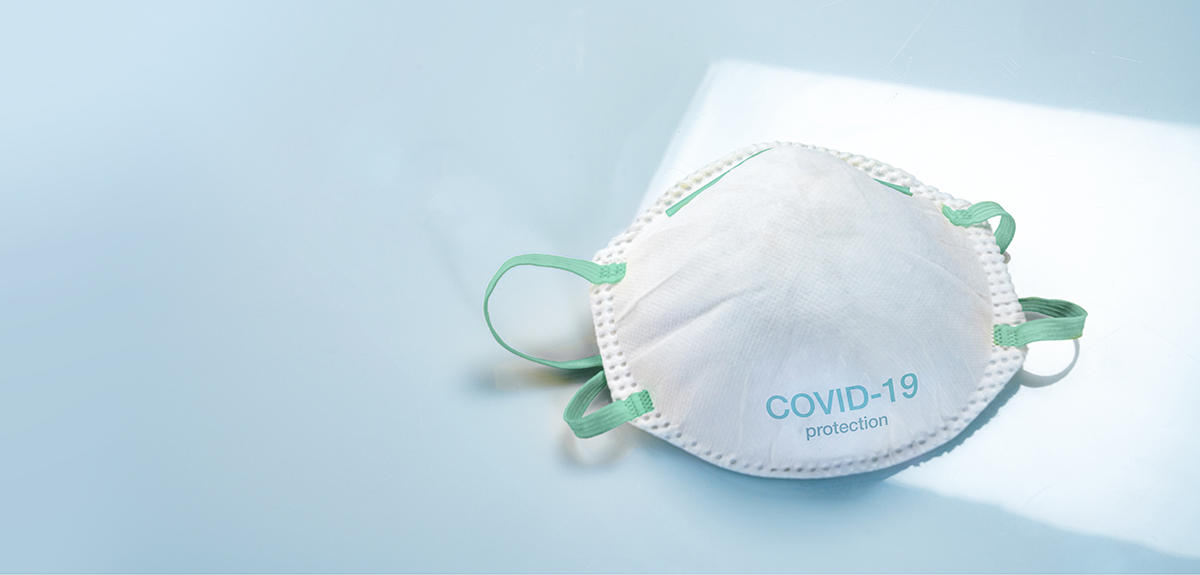Global S&T Development Trend Analysis Platform of Resources and Environment
| Protective Mask Recycling Offers Promise | |
| admin | |
| 2020-04-01 | |
| 发布年 | 2020 |
| 语种 | 英语 |
| 国家 | 法国 |
| 领域 | 地球科学 |
| 正文(英文) |

At present, all surgical and FFP2 face masks must be thrown away after a few hours of use. To offset the shortage of protective equipment, scientists, physicians and manufacturers are working together to explore ways to reuse them safely. Professor Philippe Cinquin provides an overview of the methods being tested by this consortium.
The Covid-19 epidemic has revealed the urgent need for more protective masks. In this context, you have formed a task force to study the possibility of reusing them. How would this work? In the current situation, to enable everyone to wear surgical masks in order to protect others in social interactions, or in the hypothesis of a mask shortage in hospitals (which fortunately is not yet the case), we wondered whether it would be possible to define a protocol for recycling them. The aim is to eliminate the viral load after the first use while guaranteeing the same performance level as a new mask. Launching such a programme in the middle of a lockdown must not have been easy! At first, I thought about gamma radiation, a process that uses very-high-energy photons, which we had resorted to in a project on glucose biobatteries for supplying power to implantable medical devices. I therefore contacted my colleague Laurent Cortella at the CEA in Grenoble, a specialist in ionising radiation who had developed the protocol for sterilising our biobattery, and the project was underway! Concretely, the Hygiene Department of the CHUGA, with methodological assistance from the Nancy Clinical Investigation Centre – Innovative Technology (CIC-IT) laboratory, started by defining a process for collecting used masks, which we then vacuum-compacted in the P3 Laboratory of the hospital’s Virology Department. On 19 March, the first “parcel” was ready and radiation testing began the next day. In parallel, we gathered information on the composition of the masks, which allowed our colleagues at the CEA-Saclay and the CERMAV3 to start working on the consequences of radiation on the component materials, in this case polypropylene. At the same time, have other possibilities emerged for treating masks? Similarly, other discussions led us to envisage autoclaving, a well-known sterilisation process that exposes the masks to a temperature of 121°C. We also considered dry or wet heat at 70°C, which, judging from the literature, we believed should be hot enough to destroy the virus. Lastly, it was very important to test the effects of washing on the facepieces’ performance. In addition to the virucidal action of the other processes, washing actually helps eliminate organic residues that can form protective layers around pathogens, reducing the effectiveness of the decontamination protocols. Have you reached any preliminary conclusions at this point? Concerning FFP2 respirators, the first results obtained by the Apave agency in Grenoble (southeastern France) show that ethylene oxide treatment does not hinder performance, while gamma radiation apparently does. Lastly, Olivier Terrier of the International Centre for Infectiology Research (CIRI)5 has just demonstrated that dry heat at 70°C is very effective for destroying a calibrated viral load deposited on surgical and FFP2 masks. Besides, the challenge for the week to come will be to define the best treatment method for the two types of mask – the one that’s most effective in itself, but also best suited for large-scale use, first of all for the general population, but also for the professions that are exposed to the virus, or even in the case of a dire shortage for healthcare professionals. For example, while a hospital can perform its own autoclave treatments, radiation or ethylene oxide exposure would require a more centralised process. Clearly, it’s a matter of defining, with the help of hygiene and infectious disease specialists, a complete circuit that meets requirements, under conditions that guarantee everyone’s safety throughout the entire chain, from collection to processing to the reuse of the masks. To address these issues, we have joined a newly-formed inter-ministerial task force supervised by the French Agency for Food, Environmental and Occupational Health & Safety (ANSES). In fact, this is how we were able to identify hydrogen peroxide gas and oxygen plasma as other possible disinfection agents. We are now going to test them with the tools and methodology that we have developed. Participants in the consortium: Footnotes
Go further
0 comment
|
| URL | 查看原文 |
| 来源平台 | Centre national de la recherche scientifique |
| 文献类型 | 新闻 |
| 条目标识符 | http://119.78.100.173/C666/handle/2XK7JSWQ/232389 |
| 专题 | 地球科学 |
| 推荐引用方式 GB/T 7714 | admin. Protective Mask Recycling Offers Promise. 2020. |
| 条目包含的文件 | 条目无相关文件。 | |||||
| 个性服务 |
| 推荐该条目 |
| 保存到收藏夹 |
| 查看访问统计 |
| 导出为Endnote文件 |
| 谷歌学术 |
| 谷歌学术中相似的文章 |
| [admin]的文章 |
| 百度学术 |
| 百度学术中相似的文章 |
| [admin]的文章 |
| 必应学术 |
| 必应学术中相似的文章 |
| [admin]的文章 |
| 相关权益政策 |
| 暂无数据 |
| 收藏/分享 |
除非特别说明,本系统中所有内容都受版权保护,并保留所有权利。